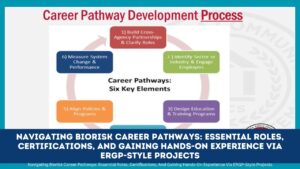Starting a new laboratory position presents both exciting opportunities and significant challenges. Amidst mastering technical protocols and equipment, one often-overlooked aspect—soft skills—can determine your integration success.
In the first 90 days, cultivating three key soft skills—listening, documenting, and seeking context—is critical for building trust, avoiding errors, and positioning yourself as a proactive team member.
Recent industry studies reveal that communication and collaboration directly impact patient safety and error prevention in lab environments.
This article delves into these essential skills, supported by real data, figures, and best practices drawn from current research and industry insights.
Why the First 90 Days Matter
The initial three months in any job set the stage for future success. Research shows a significant turnover rate during this period—33% of new hires quit within their first 90 days due to unpreparedness.
Additionally, onboarding plans that follow a 30–60–90-day structure enhance productivity by 70% and retention by 82% .
In lab settings, beyond mastering technical workflows, integrating soft skills like active listening, accurate documentation, and context-awareness profoundly influences safety, efficiency, and overall team cohesion.
Core Soft Skills for Lab Integration
The Foundation of Effective Communication
Listening is more than hearing—it’s an active process that involves asking clarifying questions, echoing back what you understand, and capturing critical instructions.
According to the Department of Labor, many entry-level employees struggle to truly listen; techniques like repeating key points and note-taking help avoid misunderstandings.
In labs, where instructions could involve complex protocols or safety guidelines, accurate listening can prevent costly mistakes or safety incidents.
Documenting – Your Safety Net and Knowledge Base
Taking notes and documenting procedures is essential.
A guide for new lab professionals emphasizes choosing a dedicated notebook, capturing even minor details, and using it as a training resource in environments lacking formal manuals.
Strong documentation supports consistency, allows safe repetition of protocols, and shows responsibility—especially crucial in environments where precision matters.
Seeking Context – Understanding the Bigger Picture
Understanding why you’re doing something is as important as how. Seeking context helps in grasping lab culture, long‑term goals, and unwritten norms.
Awareness of organizational values and team dynamics enables smarter decisions. Industry guides stress the importance of asking context-rich questions and absorbing institutional knowledge to deliver meaningful contributions quickly.
Soft Skills Breakdown for the First 90 Days
| Skill | What to Do | Why It Matters | Suggested Actions |
|---|---|---|---|
| Listening | Actively hear and clarify instructions | Prevents errors; builds trust | Rephrase instructions; take careful handwritten notes |
| Documenting | Record steps, observations, and rationales | Supports accuracy, onboarding, and recall | Use a notebook; transcribe protocols; log deviations |
| Seeking Context | Ask “why,” understand goals, history, and culture | Deepens engagement; fosters alignment | Hold informal chats; request background; observe team interactions |
This structured approach ensures each skill is applied with purpose and clarity, with clear actions and outcomes.
Applying These Skills: A Month-by-Month Breakdown
- Days 1–30: Learn & Observe
- Listen carefully to onboarding sessions and observe workflows.
- Document everything—protocols, contact names, lab schedules.
- Seek context by asking mentors about lab history and key projects.
- Days 31–60: Engage & Contribute
- Listen during team meetings and one-on-one discussions to grasp expectations.
- Document emerging best practices and recurring challenges.
- Seek context by asking “what drove this process?” or “why is this priority?”
- Days 61–90: Refine & Influence
- Listen for nuances—team culture, communication preferences, feedback patterns.
- Document improvements and propose small updates to existing workflows.
- Seek context through informal conversations: understanding team motivations fosters credibility.
Applying this progressive framework helps ease adaptation while enhancing your impact over time.
Supporting Evidence & Industry Insight
Soft skills are increasingly recognized in modern, tech-heavy environments: studies show that while technology is vital, employers emphasize communication, critical thinking, and adaptability—highlighting the irreducible human factors in automation-heavy industries.
In lab settings, mastering soft skills—especially communication and collaboration—has a measurable impact on patient safety and error prevention.
This aligns with broader research showing soft skills often yield a higher return on investment than technical training, due to their role in retention, innovation, and organizational culture.
Successfully navigating your first 90 days in a new lab isn’t just about mastering instruments and protocols—it’s about integrating through effective listening, meticulous documenting, and context-aware engagement.
These soft skills build credibility, support safety, and accelerate your contribution.
By applying this structured, month-by-month strategy—and understanding the human-centered nature of lab work—you’ll not only fit in more effectively but also lay a strong foundation for long-term success, growth, and collaboration.
Frequently Asked Questions
1. How can I improve listening when I’m overwhelmed on Day 1?
Focus on one task at a time, confirm understanding by paraphrasing instructions, and take notes—for improved retention and performance.
2. What if the lab has no formal documentation process?
Start documenting on your own immediately—your notebook can become a reference for you and colleagues, and may influence better documentation practices.
3. How do I seek context without seeming intrusive?
Phrase questions with genuine curiosity: “Could you tell me what led to this method being used?” or “What has been the lab’s biggest challenge in this technique?” Most people appreciate thoughtful engagement.

